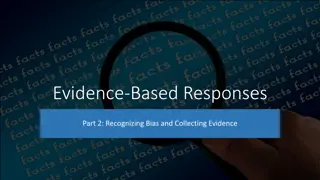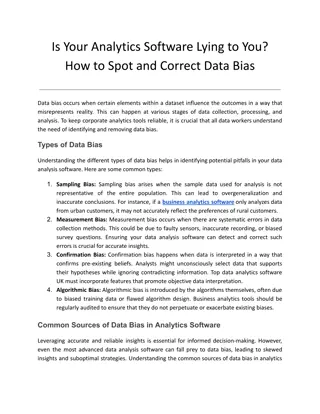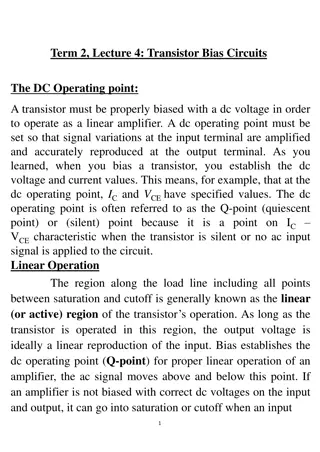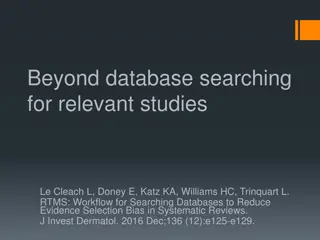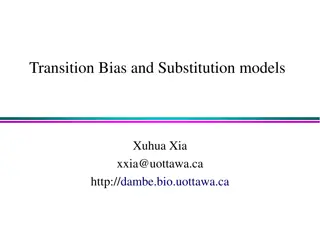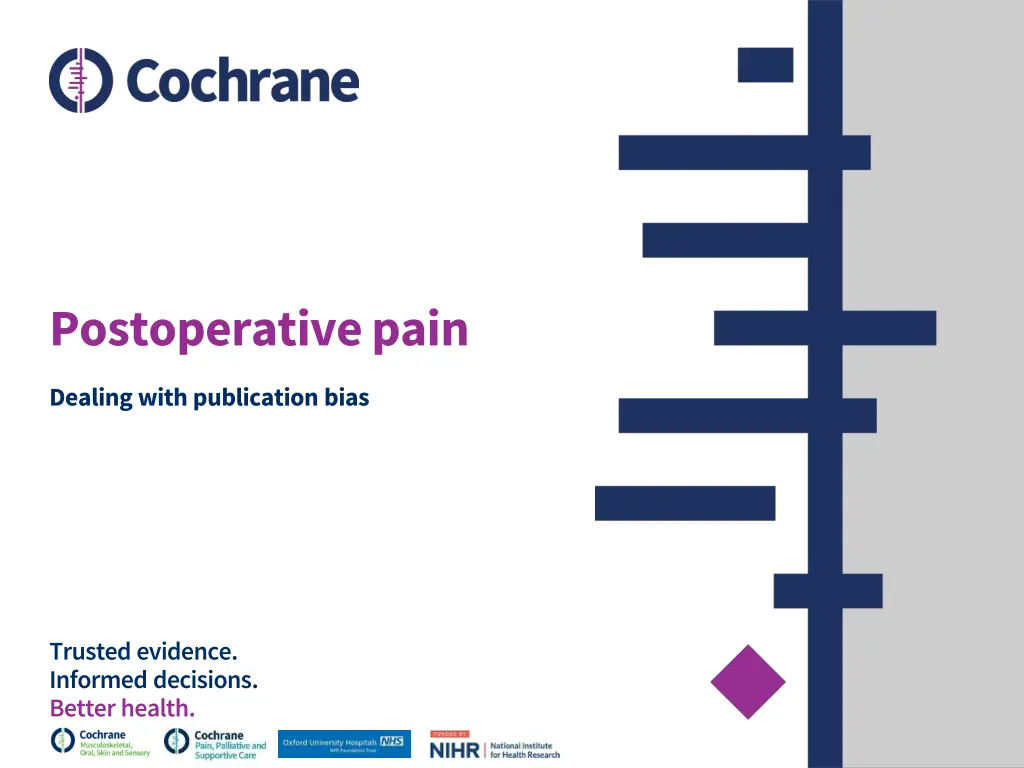
Understanding Publication Bias in Postoperative Pain Studies
Explore the concept of publication bias in postoperative pain research, uncovering how negative trials can go unpublished, leading to inflated effect sizes in meta-analyses. Learn about susceptibility to publication bias and its impact on making informed decisions for better health outcomes.
Download Presentation

Please find below an Image/Link to download the presentation.
The content on the website is provided AS IS for your information and personal use only. It may not be sold, licensed, or shared on other websites without obtaining consent from the author. If you encounter any issues during the download, it is possible that the publisher has removed the file from their server.
You are allowed to download the files provided on this website for personal or commercial use, subject to the condition that they are used lawfully. All files are the property of their respective owners.
The content on the website is provided AS IS for your information and personal use only. It may not be sold, licensed, or shared on other websites without obtaining consent from the author.
E N D
Presentation Transcript
Postoperative pain Dealing with publication bias Trusted evidence. Informed decisions. Better health.
Contents 01 Background 02 Susceptibility to publication bias 03 Examples with and without susceptibility 04 How susceptibility works 05 Calculating susceptibility method and worked example 06 Conclusions
Publication bias There is considerable information on publication bias in Cochrane Handbook Publication bias refers to negative trials not being published, or where publication is considerably delayed The implication is that effect sizes in meta-analysis may be inflated because of publication bias But it is all but impossible to know what the extent of publication is likely to be in almost all circumstances clinicaltrials.gov and similar registries allow estimates of potential for unpublished material (see CD007400.pub3 for an example of a large amount on known unpublished data)
Susceptibility to publicationbias Possible effects of publication bias in acute pain studies has been examined by estimating the susceptibility of a result to unpublished, null-effect, trials Done using a threshold for clinical utility of a number needed to treat (NNT), so the method requires dichotomous outcomes For acute pain, the threshold used is typically set at NNT of 10, as interventions of lesser effectiveness (higher NNT) would probably not be used in acute pain But the threshold can be set at any level depending on clinical circumstance Susceptibility is described as number of participants in null effect trials needed to break this clinical utility barrier
Example of susceptibility The following slide has examples of drugs and doses that were regarded as being susceptible from a Cochrane Overview (CD008659) The table provides the available data used in a meta-analysis, the numbers of participants in active and placebo arms, the percentages with the outcome, and estimates of relative and absolute effects The number of participants in null effect trials can then be compared with available data These were considered susceptible to publication bias as the number of participants in such trials would be found in a small number of trials, often a single trial
Example without susceptibility The following slide has examples of drugs and doses from the same Cochrane Overview (CD008659 )that were not regarded as being susceptible They were not considered susceptible to publication bias as the number of participants in such trials would be unfeasibly large to exist as unpublished data In acute pain most comparisons would involve 200 participants or fewer. Taking aspirin as an example from the table, over 30 large unpublished trials with null effect would be required to overturn the result For more recent drugs, where trials are registered, even 10 hidden trials is unfeasible
How susceptibility works Susceptibility to publication is more likely when: effect size is small (high NNT) sample size is small Size of the symbol is proportional to the number of participants in the meta-analysis These data, from an acute pain overview (CD008659), demonstrates that with low (good) NNT and large sample size, publication bias is unlikely to affect a result
Robust data on efficacy are unlikely to be overturned by publication bias
Calculating susceptibility The calculation sheet and method are given on the next side It is simple arithmetic, and requires no complex statistical methods It is available as an Excel spreadsheet from PaPaS, together with a PDF of the book chapter explaining how the method was derived A worked example of ibuprofen acid 400 mg from the previous slide is shown in a subsequent side
Calculation example Example is for 400 mg ibuprofen acid in Cochrane Review, with 5604 participants in 51 trials, with NNT for at least 50% pain relief of 2.5 (2.4 to 2.6)
Conclusion Considerable information on publication bias in Cochrane Handbook Refers to negative trials not being published, or where publication is considerably delayed Implication is that effect sizes in meta-analysis my be inflated because of publication bias But it is all but impossible to know what the extent of publication bias is likely to be in almost all circumstances clinicaltrials.gov and similar registries make it possible to estimate the amount of unpublished material (see CD007400.pub3)
Acknowledgements Thank you to the Cochrane Network Innovation Fund Thank you to Mohammed A. Abusayed (University Hospitals of Derby and Burton, UK) for auditing reviews of interventions for pain in the Cochrane Library in 2016 Thank you to all the project team members and MOSS key contacts Joanne Abbott; Geert Crombez; Rob Dellavalle; Christopher Eccleston; Anna Erskine; Emma Fisher; Kerry Harding; Jennifer Hilgart; John Lawrenson; Hopin Lee; Nuala Livingstone; Lara Maxwell; Andrew Moore; Gill Norman; Neil O'Connell; Roses Parker; Phil Riley; Kate Seers; Teo Aminah Wasteneys Quay; Andrew Smith; Martin Tram r; Peter Tugwell; Katie Webster; Amanda C de C Williams All the slides and documents hosted on the PaPaS website https://papas.cochrane.org/resources/acute-pain-outcomes


